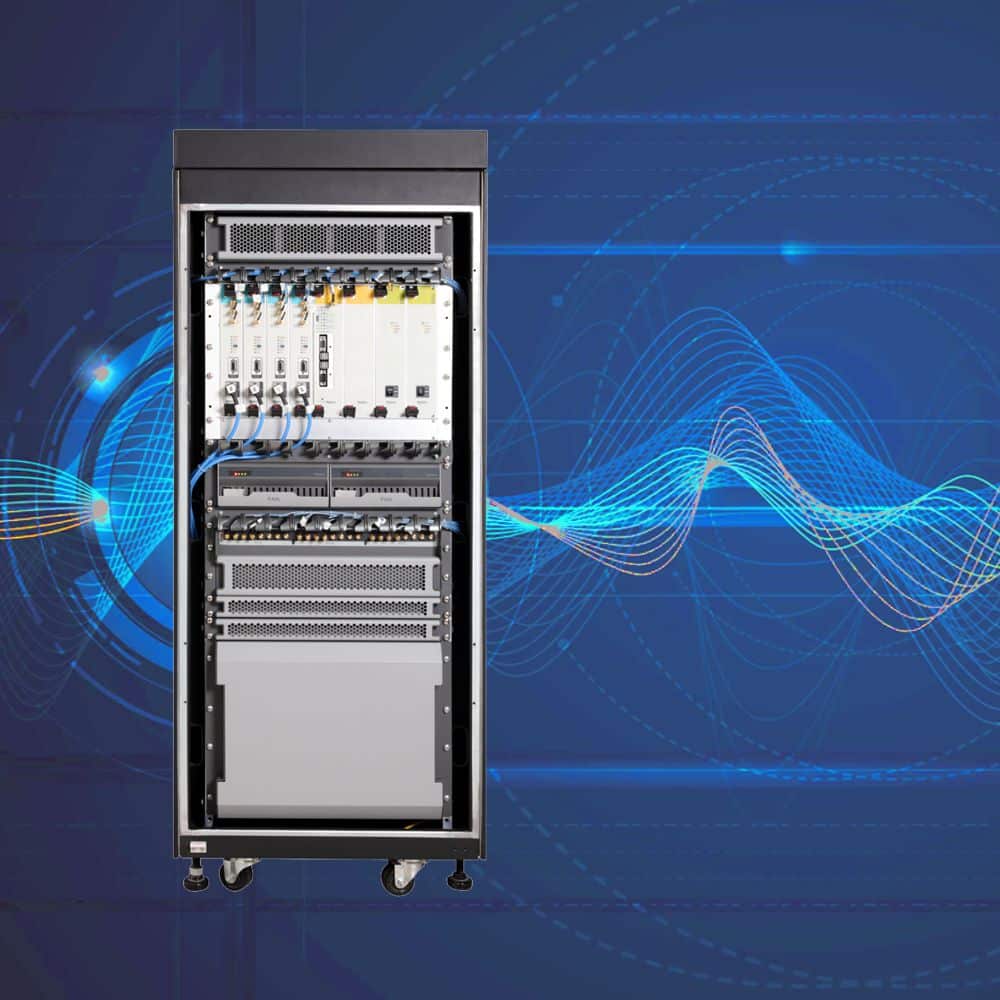DMR Tier III Trunking
Digital Radio Trunking Systems

Hytera DMR Tier 3 Radio Trunking Systems
Trunked Radio systems optimize voice or data traffic through a limited number of frequencies, maximizing the available resources for a large group of users. DMR Tier III Trunked Radio utilizes repeater technology with a dedicated control channel, managed by a server.
The Hytera DMR Tier III Trunking has been developed using the ETSI DMR open standard. It is an IP-based Digital Trunking System designed to provide voice, dispatch, and radio management capabilities across wide geographic areas.
DMR Tier III provides a dedicated FCC FB8 frequency control channel for radios to register and request service from the network. The remaining channels in the system are allocated to the radio as they are needed and are therefore a shared or “trunked” resource called a “traffic channel”. As soon as a traffic channel is available, a user will be assigned to use the channel, without having to wait for a specific channel to become available.
The Hytera DMR Tier III Trunking solution consists of a central controller called a Mobile Switching Office (MSO), a Base Station Controller Unit (BSCU) at each radio site, multiple repeaters to carry the traffic, and a wide area network that connects all the different pieces together. IP connectivity is provided by a variety of third-party internet, LAN, or VPN network operators.
The Hytera DMR Tier III system also supports SmartOne, a comprehensive dispatching and unified radio software platform, and the Multimedia Recording and Playback System (MRPS) call logging, recording, and replay system.
Hytera DMR Tier 3 Trunking Pro and Trunking Lite
Hytera offers two different DMR Tier III systems. The DS6210 DMR Tier III Pro and the DS6211 DMR Tier III Lite are based on different hardware architecture, but from a radio user perspective, both systems offer the same features and functionality.

DS6210 DMR Tier III System
The DS6210 DMR Tier III Pro has blade architecture for easy installation and system scalability. It accommodates redundant controllers and power supplies in the same cabinet for immediate fail-over in the unlikely event of a blade card failure. The system is supplied in fully configured cabinets ready for final site installation.
The DS6210 DMR Tier III Pro repeater site channels have triple receive diversity to enhance the uplink receive signal for all field radios, and improves the uplink reliability for portable radios at the edge of coverage.
DS6211 DMR Tier III System
TRUNKING LITE
The DS-6211 DMR Tier III Lite system uses Hytera HR1062 H-Series repeaters with Tier III licenses to reduce the cost compared to the DS6210 DMR Tier III Pro solution. The DS-6211 DMR Tier III Lite system supports all the same feature-rich functionality of the DS-6210 except for the triple diversity. Using standard 19” rack equipment, the DS-6211 DMR Tier III Lite systems provides the ability to install the equipment in standard system racks for additional deployment flexibility.

Key DMR Tier III Trunking System Benefits
Dedicated Management Channel
DMR Tier III trunking increases efficiency of channel usage with large groups of radios users using a dedicated control channel, managed by a server. This allows for maximizing channel frequency resources for high-volume call traffic and multiple user Talkgroups.
System Security
Radio Management and Calling Features
The Hytera DMR Tier III System offers a multitude of different management services to allow radios to interact with the network. Radios are registered on the network for identification and can be configured with subscriber area restrictions and control channel reselection.
Two-Way DMR radios on a DMR Tier III system support voice and data services. The system provides standard voice services such as individual or private calls, group, emergency, broadcast, all call (this is a system wide call to everyone on the network), dispatcher, and and telephone calls. Data services include text messages, GPS data, status message (pre-configured messages), and emergency alarms. Additional radio features support on DMR Tier III systems include late entry into a group call, ambience listening, interrupt/override, dynamic group number assignment, voice recording, remote monitor, OTAP (Over the Air Programming), vote now, and group patching.
Mission Critical Redundancy
System Interoperability
Contact an Authorized Hytera Dealer
Hytera is the industry leader in fully DMR standards compliant trunking systems. Our professional systems engineers work with authorized Hytera Canada Dealers to deliver reliable and cost-effective DMR Tier III Trunking Systems.
Discover the benefits of DMR Trunking and Contact Hytera or Find a Dealer today.
We're Here To Help
Call a live person during business hours, email us, or complete the form on the right and we will provide the information you need.
(905) 305-7545
"*" indicates required fields


